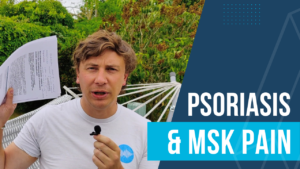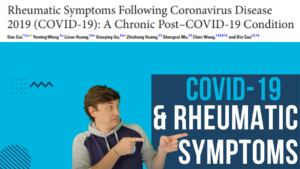Intro
Welcome to another series of blogs, this time on the topic of Osteoporosis. These will look to unpack in some detail the important aspects of this relatively common condition and what as Physio’s we should be doing in clinic.
It is an important distinction to make at this point that recognising someone at risk of low bone density (osteopenia/osteoporosis) is very different to recognising the red flag indications of a fracture which may be due to that low bone density. In a red flag situation, the recognition of potentially low bone density will aid in your clinical reasoning but clearly the management will be significantly altered.
As usual feedback is greatly appreciated and any further reading for me please send it my way!
PLEASE REMEMBER – THIS BLOG IS NOT A REPLACEMENT FOR CLINICAL REASONING, IF YOU ARE UNSURE GET ADVICE
What is Osteoporosis?
Osteoporosis is a combination of reduced bone mass and reduced bone quality which understandably results in an increase in the fragility of the bone structure. Imagine the inside of the bone to be supported by scaffolding bars, in Osteoporosis these bars are fewer in number (reduced bone mass) and individually less solid (reduced bone quality).
These changes lead to the bone being at a higher susceptibility to fracture, classically presenting as low trauma (areas such as the wrist or neck of femur) or pathological and sometimes asymptomatic in the spine.
Developing Osteoporosis is multifactorial, those starting at a lower level of bone density and those who are exposed to local or systemic alterations to bone remodelling are the most at risk. i.e. if you reach a lower bone density level in adolescence then the normal loss of density as you age will allow it to fall to a level that increases susceptibility to fracture or exposure to something that accelerates the bone loss will achieve the same result.
Who Gets Osteoporosis?
Most commonly Osteoporosis follows the menopause as Oestrogen has an inhibitory affect on the osteoclasts (these resorb bone). Older adults are also commonly affected as mentioned above a decrease in bone density is a normal (although not necessarily inevitable) result of the ageing process.
A third category are those with an underlying cause for their reduction in bone density, these are often younger people with a history of nutritional deficiencies, drug therapies or inherited causes.
The prevalence of Osteoporosis itself is difficult to determine and likely under reported however in the UK over 1/3 women and 1/5 men will sustain a fragility fracture in their lifetime and at age 75-84 the absolute 10 year risk for sustaining a fragility fracture is approx. 24% for women and 14% for men.
What should we do?
Clearly in cases of a known fracture especially if it is low trauma, we should be considering factors that may have contributed to a lower bone density and I would hope this point doesn’t require labouring significantly.
We should retain some level of suspicion for all the people who attend Physiotherapy and consider if they have risk factors which may lead them to have (or to develop) low bone density. As seen in the above numbers, the likelihood of a fragility fracture is relatively high over a lifetime so I do not believe it unreasonable to consider the factors in every person. We will be asking many of the questions as part of a normal assessment and a process of connecting the dots is not an onerous one.
In our younger attendees recognition of factors contributing to the possibility of low bone density and/or an underlying cause does raise the possibility of more medical urgency. Nutritional deficiencies in conditions such as RED-S for example or familial history of fragility fractures will raise our suspicions. I will cover these in more detail in later instalments.
Investigating
DXA scanning is the gold standard for measuring bone mass, it is usually easily accessible via a community service but local pathways will vary. Using a tool such as the FRAX (fracture risk assessment) can help to assess thresholds for investigation.
Management
Medical management through supplementation of calcium and vitamin D, bisphosphonates and biologics can be used. Physiotherapy has a role using weightbearing physical activity to load the skeletal structure and in falls prevention. (more to come in a subsequent blog).
As usual thanks for reading and don’t forget to check out my other blogs. Sign up for the Rheumatology.Physio newsletter for further resources and updates!
Osteoporosis is one of the featured conditions in my “Rheumatology At A Glance” booklet along with 9 others – more details in the shop here.
Related Blogs
An Introduction to Rheumatoid Arthritis for Therapists
Imaging in Rheumatology for Physios
References
Book by Drs Al-Sukaini, Azam and Samanta https://www.amazon.co.uk/Rheumatology-clinical-handbook-medical-students/dp/1907904263/ref=sr_1_1?ie=UTF8&qid=1538037053&sr=8-1&keywords=rheumatology+a+clinical+handbook
Cauley J – Osteoporosis: fracture epidemiology update 2016, Current Opin Rheumatol 2017, 29:150–156
Rosen CJ. The Epidemiology and Pathogenesis of Osteoporosis. [Updated 2017 Feb 21]. In: Feingold KR, Anawalt B, Boyce A, et al., editors. Endotext [Internet]. South Dartmouth (MA): MDText.com, Inc.; 2000-
Compston, J., Cooper, A., Cooper, C. et al. Arch Osteoporos (2017) 12: 43. https://doi.org/10.1007/s11657-017-0324-5


